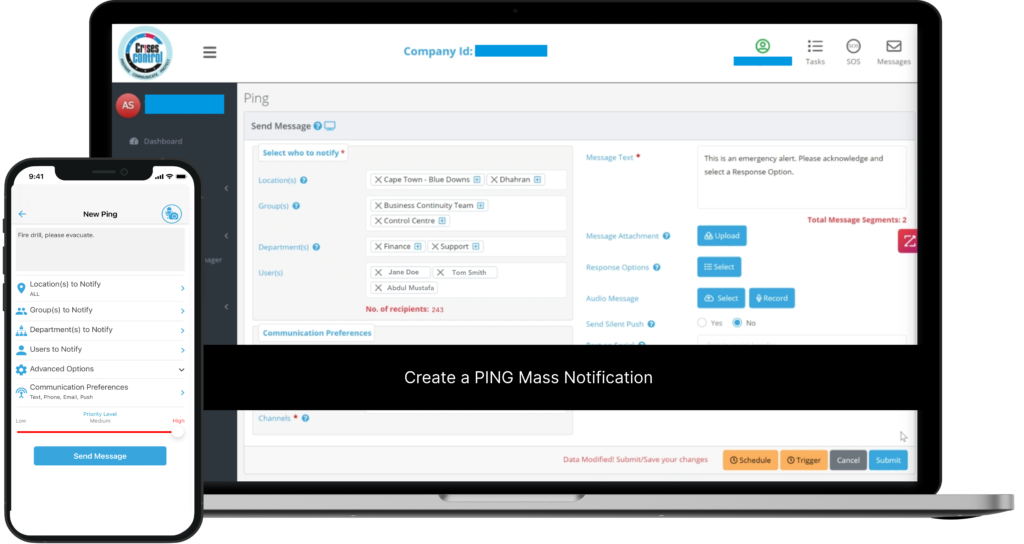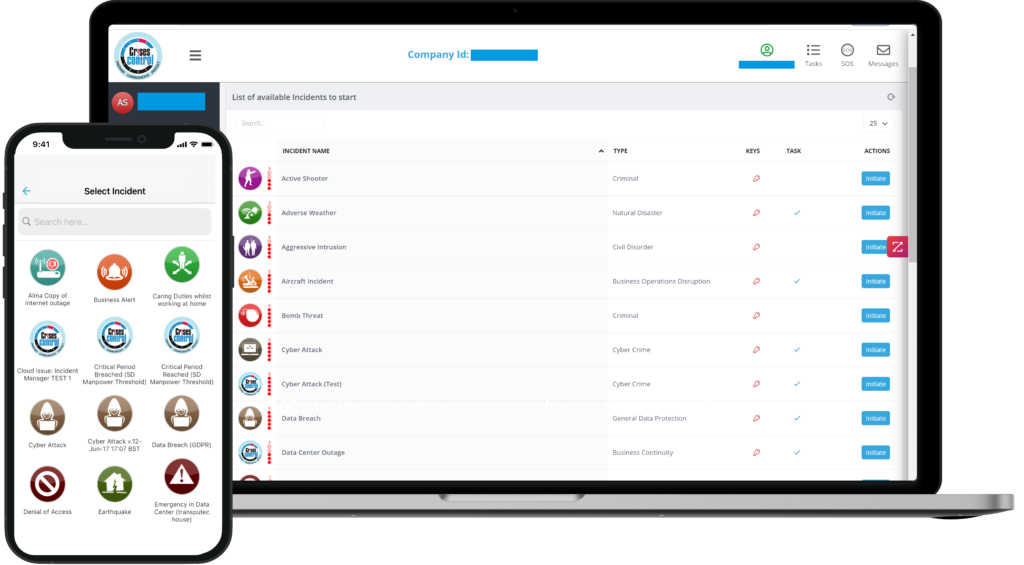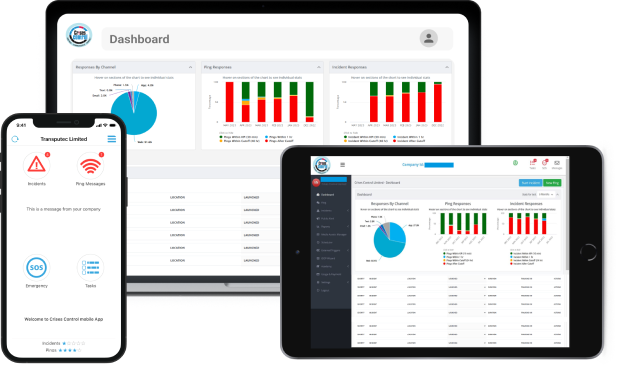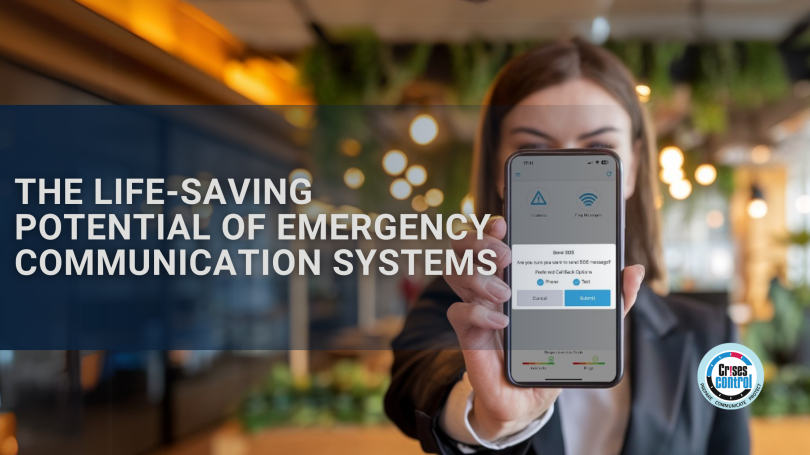Written by Anneri Fourie | Marketing Executive
Emergencies rarely give notice. They arrive abruptly—sometimes with devastating consequences for those unprepared. Businesses face countless potential threats, from fires and floods to IT failures and cyberattacks. The ability to act quickly and communicate effectively is critical in such moments, as it can mean the difference between protecting lives and enduring chaos.
For many organisations, traditional communication methods fall short under pressure. It’s here that emergency communication systems, especially cloud-based solutions, have stepped in to transform how crises are managed. Let’s explore how these systems work, the tangible benefits they bring, and how Crises Control can support your organisation in building resilience and saving lives.
1. The Challenges of Traditional Crisis Communication
In a crisis, clear and timely communication is crucial. Yet, many organisations rely on outdated systems that struggle to meet modern demands. Here’s why traditional approaches often fail:
- Infrastructure Dependency: Landlines or on-premises systems are vulnerable to disruptions like power outages or physical damage.
- Limited Scalability: Sending alerts to large groups quickly is challenging without advanced systems.
- Delays in Coordination: Manual processes often lead to confusion, delays, or missed messages.
- Lack of Integration: Disconnected systems make it hard to manage a centralised response, leading to inefficiency.
These limitations not only delay responses, but can also result in severe consequences, including financial losses, reputational damage, and even loss of life.
2. The Power of Cloud-Based Emergency Communication Systems
Cloud-based solutions have redefined how organisations respond to emergencies. By leveraging the flexibility and resilience of the cloud, they address the shortcomings of traditional systems.
How Cloud-Based Systems Work:
- Alerts and notifications are delivered instantly via SMS, email, mobile apps, or voice calls.
- Messages are sent and received globally, bypassing local infrastructure challenges.
- Centralised dashboards provide a real-time view of incidents, enabling quick decision-making and efficient coordination.
Why They Excel in Emergencies:
- Always-On Availability: Cloud systems operate even when local infrastructure is compromised.
- Scalability: Whether it’s a local incident or a widespread disaster, cloud systems adapt effortlessly.
- Data Security: Advanced encryption and secure servers protect sensitive information during a crisis.
These capabilities empower organisations to maintain communication, reduce response times, and keep their people safe—no matter the scenario.
3. The Real-Life Benefits of Emergency Communication Systems
3.1 Faster Response Saves Lives
During a fire, flood, or cyberattack, every second counts. Emergency communication systems enable organisations to send instant alerts to employees, stakeholders, and emergency teams, ensuring everyone knows what to do and where to go.
For example, in a fire, a single push notification could provide evacuation instructions and assembly points to everyone in the building within seconds.
3.2 Seamless Coordination Across Teams
Disasters often require input from various teams—HR, security, IT, and leadership. Cloud-based systems centralise communication, ensuring everyone works from the same plan and updates are shared in real time.
3.3 Reducing Infrastructure Dependence
Unlike traditional systems, cloud-based platforms continue to operate even if physical offices are inaccessible. This ensures consistent communication during events like floods or power outages.
3.4 Compliance and Preparedness
For industries with strict safety or regulatory requirements, emergency communication systems make it easier to meet standards while improving organisational readiness.
Interested in our Ping Emergency Communication System?
Efficiently alert everyone in seconds at scale with our Emergency Communication System – PING, get the message out fast and ensure rapid response and recovery.

4. Why Crises Control Stands Out
Crises Control takes emergency communication to the next level with a range of innovative tools and features. Designed to cater to organisations of all sizes, our platform provides everything you need to stay prepared, respond quickly, and recover effectively.
4.1 Ping Mass Notification
Deliver instant alerts via multiple channels to ensure no one misses critical updates. With Crises Control, you can reach teams in seconds—wherever they are in the world.
4.2 SOS Panic Button
This life-saving feature empowers employees to raise an alarm during personal or workplace emergencies. Alerts include GPS locations, ensuring rapid and precise responses.
4.3 Incident Management
Our incident manager module streamlines the entire response process. From logging the event to tracking recovery steps, it ensures nothing is overlooked.
4.4 Reliable Cloud Infrastructure
Unlike platforms reliant on third-party services, Crises Control operates on its private cloud. This means it remains functional even during outages affecting major providers like Microsoft.
4.5 Flexible Integration
The platform integrates seamlessly with existing systems, allowing you to enhance your current processes without disrupting workflows.
5. Real-World Applications of Emergency Communication Systems
5.1 Natural Disasters
When severe weather strikes, rapid warnings can save lives. During a hurricane, Crises Control ensures that evacuation alerts reach everyone in the affected area within seconds, guiding them to safety.
5.2 Workplace Incidents
From fire alarms to security breaches, emergencies in the workplace require immediate action. With Crises Control, detailed instructions are sent to all staff instantly, minimising panic and confusion.
5.3 IT and Cyber Disruptions
In an era of rising cyberattacks, downtime can cost millions. Crises Control notifies IT teams instantly, enabling a faster response and reducing operational disruption.

Interested in our Incident Management Software?
Customise your Crisis Incident Management Software to meet your specific needs with our flexible tools & stay connected and informed during the crisis and incident management process
6. Why Every Organisation Needs an Emergency Communication System
6.1 Safeguard Lives and Assets
The primary goal of any emergency communication system is to protect people. Quick, clear instructions during a crisis prevent injuries and save lives.
6.2 Build Trust and Confidence
Employees, clients, and stakeholders trust organisations that demonstrate preparedness and care for their safety. An effective system boosts confidence and peace of mind.
6.3 Minimise Downtime and Losses
A fast, coordinated response means quicker recovery, reduced financial losses, and minimal impact on operations.
6.4 Stay Ahead of Compliance
For many sectors, having a robust emergency plan is more than just smart—it’s a legal requirement. Crises Control makes compliance straightforward while enhancing overall safety.
7. Take the First Step Towards Better Crisis Management
Emergencies can happen anytime, and preparedness is key. Investing in a reliable, cloud-based emergency communication system ensures your organisation is ready to respond quickly and effectively when it matters most.
With Crises Control, you’re not just investing in a tool—you’re partnering with a comprehensive solution for crisis management software and emergency communication systems that prioritise safety, efficiency, and reliability.
Take action today. Contact us now to schedule your free personalised demo and see how Crises Control can help protect what matters most.
Request a FREE Demo

